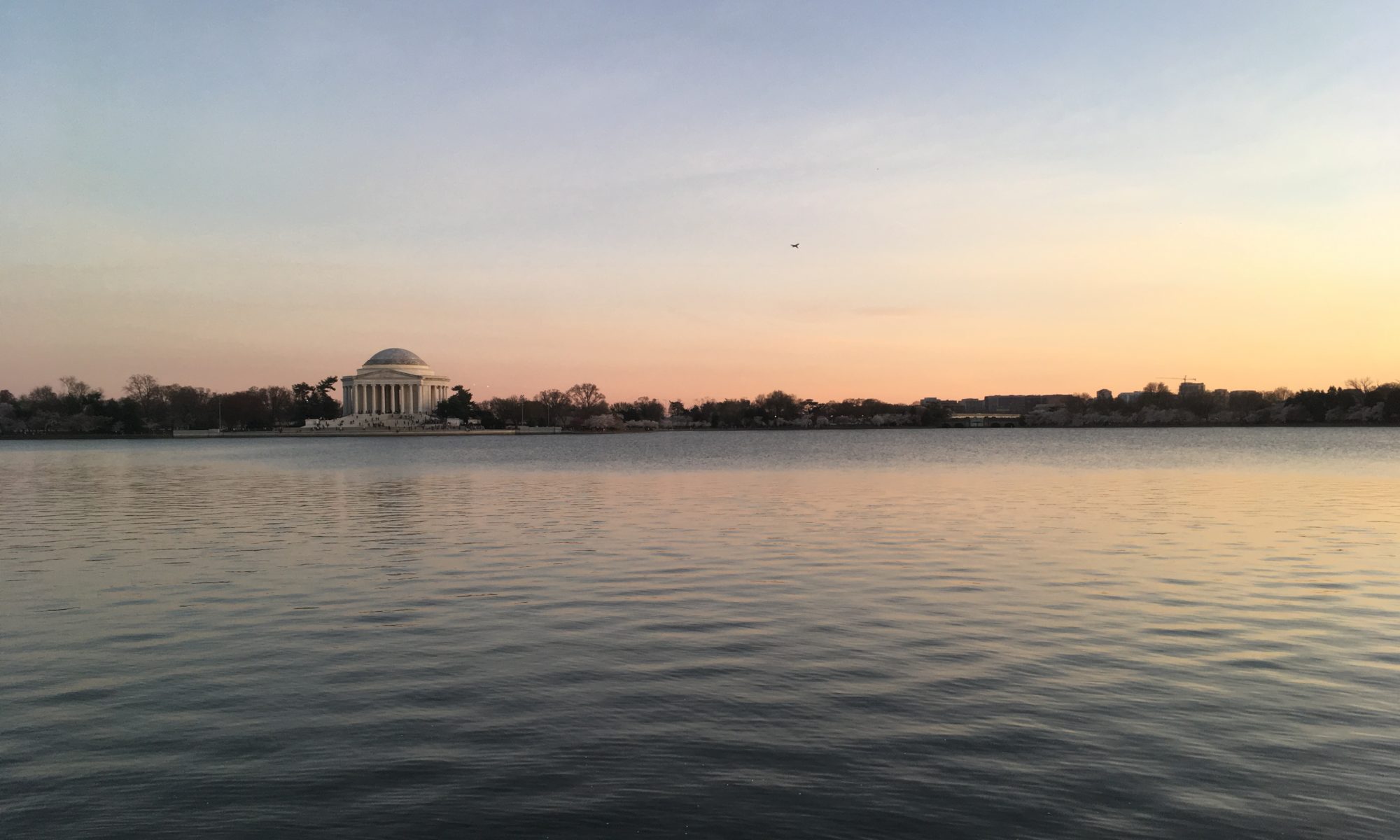–The guides at Colonial Williamsburg and Jamestown Settlement
Upon visiting Colonial Williamsburg and Jamestown Settlement (museums that illustrate the history of 17th and 18th century Virginia), I learned about a fascinating profession called historic interpreters. In the post below, I explore the similarities between their work and what language interpreters do.
下記の投稿では、17世紀と18世紀のバージニアを再現した歴史博物館「コロニアル・ウィリアムスバーグ」と「ジェームズタウン・セトルメント」を訪ねた際に学んだ、historic interpreter (歴史の演出者)と言われるお仕事について取り上げました。通訳(language interpreter)となぜ似た呼び方がなされているのか、その目的や仕事における共通点は何なのかを模索しています。

Earlier this week, I visited Colonial Williamsburg, an outdoor museum dedicated to the history of the capital of Virginia colony in the 18th century. I also enjoyed visiting Jamestown Settlement, which discusses the history of the first English settlement in the America. I was especially impressed with how the latter carefully sought to highlight stories of diverse people, including indigenous populations, those who were forcibly brought over from Africa, and women.
Everywhere we went, there were costumed guides giving tours, answering questions, giving theater performances, and demonstrating daily life during that time. Some were vocal and friendly, others more reserved and focused on the task at hand–and all seemed dedicated to their role and knowledgeable about the people that they represented.
I was surprised to learn that these guides were called “historic interpreters.” As a language interpreter, I was immediately drawn to this concept. Why are we both called by the same name, and what are the similarities?
Historic Interpreters
While I didn’t have the opportunity to speak directly to a historic interpreter about this, I was intrigued by the explanation posted on the website of Colonial Williamsburg (quoting Mr. Ken Treese, Manager of Interpretation and Professional Development for the Historic Area):
An Interpreter lives somewhere between the world of educator and Sherpa and his or her chief aim is to connect our audiences to the many meanings of an object, a story, an event or a place. Not unlike a language interpreter . . . a historic interpreter translates or reveals hidden meanings from our past and makes them relevant to our present.

Indeed, that sounds very similar to what we do. What seems fascinating to me is that historic interpreters connect the past with the present, forging ties across time. We language interpreters connect those who speak different languages, creating ties across geography.
Historic interpreters at Colonial Williamsburg apparently receive training from the National Association for Interpretation (NAI). NAI’s membership seems to include individuals who work at parks and zoos as well, and not just those who work at historic sites. The former seems very similar to a type of language interpreter called interpreter guides, except it is presumably monolingual. Both types of interpreters are tied to specific geographic areas, welcoming visitors and providing local knowledge. The NAI website occasionally even refers to bilingual interpretation, further blurring the lines.
Etymology and Definitions
I’ve always wondered why language interpretation is called “interpretation.” The word “interpret” apparently came from the Latin word interpretari, which means to “explain.” While we language interpreters should seldom insert explanatory notes into what the original speaker said, this does capture the spirit of what we do, as we always seek to choose vocabulary that is not only accurate but also easy for the listener to understand. “Explain” also seems similar to the goals of historic interpreters and those at NAI. (Incidentally, historic interpreters also seem to fit another definition of “interpreter” that’s listed in the Oxford Learner’s Dictionaries: “a person who performs a piece of music or a role in a play in a way that clearly shows their ideas about its meaning.”)
By contrast, the word “translate” is related to the word “transfer.” Based on the image these words conjure (“explain” versus “transfer”), it seems to me that interpreters can show more of their individuality in their work compared to translators. The former works more directly with people (which requires flexibility to respond to unpredictable actions), while the latter focuses more on words that are fixed on a page (emphasizing accuracy and eloquence rather than quick thinking).
While I enjoy serving as both a language interpreter and a translator, I do feel that I get to be myself a bit more while interpreting. This is especially true while guiding visitors on the International Visitor Leadership Program or interpreting on stage for cultural events. But even conference interpretation, where we are in booths that are a bit removed from the action, seems somewhat personal. The International Association of Conference Interpreters (AIIC) explains that interpretation “makes use of particular linguistic resources, transmitting the original speaker’s ideas with their particular rhythm and intonation, making use of rhetorical devices and yes, even gestures.” Indeed, our ears are our most important asset when interpreting, but we also read lips and expressions. We empathize with the person we are interpreting and mimic their tone, sometimes involuntarily copying their body language. And we reproduce everything that we see and hear with our own voice, which is unique to each one of us.

Between historic interpreters and language interpreters, the difference is that the latter benefits from working with someone who is (in most cases) alive and present in real time, even if they happen to be on Zoom and physically located on the other side of the world. I have so much respect for historic interpreters, who must not only conduct substantial research on people who are long gone, but also fill in the gaps with their imagination and enact what they studied. I look forward to meeting and learning from more of these wonderful interpreters in the future.

Fascinating insights, Shiori! Thanks for sharing.
Thank you very much, Robert!! These historic interpreters were also actors in many ways. I would love to hear your insight sometime, based on your experience with movies!